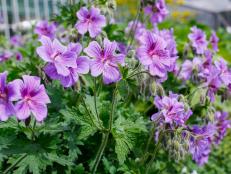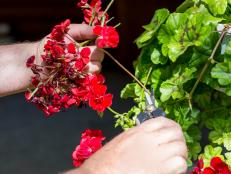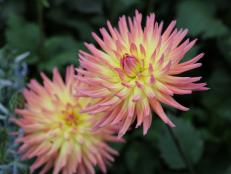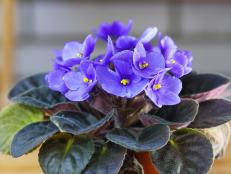Geranium Oil and Extract
Try your hand at making geranium oil using scented geranium leaves. We’ll help you get started.
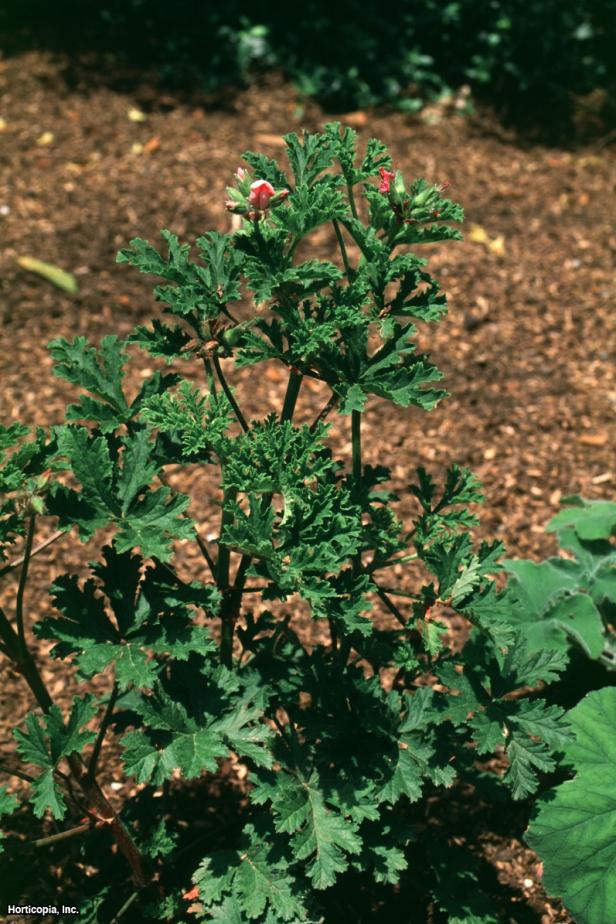
Add a scented geranium to your garden or containers, and you can make your own geranium oil. While technically you can use any scented geranium to make geranium oil, if you purchase geranium essential oil you’ll most likely get Pelargonium graveolens. This scented geranium is the one most often listed as rose scented geranium. You’ll often find it listed with the variety name 'Old-Fashioned Rose.'
If you’re serious about making rose geranium oil, it’s a good idea to find a plant locally that you can actually smell before you commit to growing it. Why? Because many scented geraniums are sold as rose geraniums. Brush the leaves or lightly rub one between your fingers to release the scent. As you test leaves, you should know that geranium oil made from older, yellowing leaves actually has a stronger rose scent. New, young leaves typically offer a lemon-apple fragrance. Use older leaves for your scent test.
When buying scented geraniums, a good rule of thumb is that scented geraniums with small leaves yield smaller plants overall. Larger leaves mean a bigger plant. If you’re intending to make geranium oil, find the rose scented geranium with the biggest, most fragrant leaf so you’ll have plenty of leaves to harvest.
In professional circles, geranium essential oil comes from a steam distillation process. You can make geranium oil at home using an infusion of leaves and stems. To create an infusion, you soak plant parts in oil. The process is simple and requires few supplies.
Start with a clear glass jar with a tight fitting lid. Gather enough rose geranium leaves, flowers and stems to fill your jar one-third to one-half full. The leaves have the most oil and fragrance. Chop and/or bruise the leaves loosely to release the oils, but don’t mash them. Place the leaves in the jar and cover them with an unscented oil, like light olive oil or jojoba oil.
Stir the mixture with a wooden spoon, and add the jar lid. Place the jar in a sunny spot for two to seven days (longer is better). Strain the oil into a clean jar. Squeeze the leaves that you catch in your strainer to get all the scented geranium oil out of them that you can. Compost the used leaves. Repeat the whole process again four more times, each time adding fresh leaves to the oil.
You’ll get the best result if you process your geranium oil infusion for a total of five weeks. Consider straining it twice before you transfer the finished geranium oil to the final container. Store geranium oil in dark glass bottles, if possible. The infusion will be strongest for six months, but you can use it for up to one year. Be sure to label your bottles with dates and contents.
Many people count on geranium oil for its relaxing properties; some wear it as perfume. The most traditional use of geranium oil is as a wound treatment. This oil has antifungal, antibacterial and styptic properties that help prevent infection and promote healing. Geranium oil is also good for treating skin conditions, such as eczema, acne or psoriasis. Add some to coarse salt to make a skin scrub.









